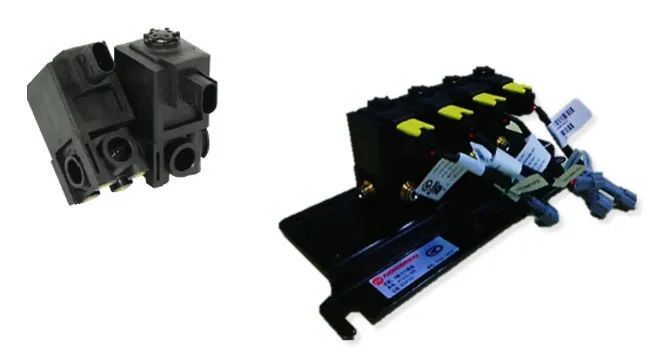What is the 191.019.01 Saichi SEITZ pilot valve?
191.019.01 Saich SEITZ pilot valveWhat is it?

191.019.01 Saich SEITZ pilot valve is a non-direct load safety valve. It consists of a main valve and a pilot valve (also known as an "auxiliary valve"). The main valve is driven by the medium discharged from the pilot valve. Since the pressure in the system is in the form of pulses, it is also called a "pulse safety valve". In an isolated situation, the pilot valve itself is also a direct load safety valve. When the medium pressure reaches the opening pressure of the pilot valve, the pilot valve opens first, and the discharged medium enters the main valve through the bypass. The pilot safety valve (also known as the pulse safety valve) is a safety valve that relies on the medium discharged from the pilot valve to drive or control the main valve, and the pilot valve itself is a standard spring direct load safety valve. Safety valves belong to automatic valves, mainly used in boilers, pressure vessels, and pipelines, to control the pressure not exceeding the specified value, playing an important protective role for personal safety and equipment operation. Safety valves can be divided into micro-opening safety valves and full-opening safety valves based on the opening height of the valve disc.
191.019.01 Saich SEITZ pilot valveDivided by structural form into vertical hammer type, lever type, spring type, and pilot type (pulse type); based on the structure of the valve body, it can be divided into closed and non-closed types. A closed safety valve refers to the exclusion of leaking medium, all along the outlet to a designated location, generally used for toxic and corrosive media. For air and steam safety valves, non-closed safety valves are used. The selection of safety valve products should be determined based on the actual sealing pressure. For spring safety valves, within the nominal pressure (PN) range, there are several working pressure levels of springs. When ordering, in addition to specifying the safety valve model, name, medium, and temperature, the valve body sealing pressure should also be specified; otherwise, it will be based on the largest sealing pressure supplied. Pilot safety valves are suitable for high pressure and large diameter occasions. Pilot overflow valves have good sealing performance, and their function is less affected by back pressure. The disadvantage of this type of safety valve is that its reliability depends on the coordination of the main valve and the pilot valve, and its action is not as fast and reliable as that of directly acting safety valves, and the structure is relatively complex. When the protected system is operating normally, the sliding valve in the pilot valve chamber is in the open state, and the system pressure enters the main valve from the inlet through the lower pipe, and the pilot valve chamber connects to the upper pipe entering the air chamber above the main valve disc (piston). At this time, the gas pressure in the upper air chamber is equal to the system pressure at the main valve inlet. The sealing surface of the pilot valve seals to ensure that the gas in the air chamber above the main valve cannot be discharged from the pilot valve discharge port. Since the piston area is larger than the sealing surface area of the valve disc, the system pressure generates a downward resultant force on the main valve disc, causing the main valve to close and seal.
When191.019.01 Saich SEITZ pilot valvethe system pressure rises to the set pressure, the gas will push the pilot valve core upward at the sealing surface of the pilot valve, causing the sealing surface to be in the open state. At the same time, the sliding valve in the pilot valve chamber moves upward, closing the air passage of the pilot valve chamber. The medium in the air chamber above the main valve disc is discharged through the opened sealing surface of the pilot valve, reducing the pressure above the main valve disc. The valve disc of the main valve opens under the push of the inlet pressure, releasing the pressure in the system. When the system pressure drops to a certain value, the pilot valve core returns to its seat under the action of the spring, the sealing surface of the pilot valve closes, the sliding valve of the pilot valve chamber opens, the valve chamber is unobstructed, and the system pressure re-enters the air chamber of the main valve disc through the pilot valve chamber, closing the main valve disc.
Related News
What impact does the F011068 Norgren valve group pilot valve have?
2022-12-23 11:19
What is the function of the 191.019.01 Saichi SEITZ pilot valve?
2022-09-20 13:37

